SpaceX just docked the first commercial spaceship built for astronauts to the International Space Station — what NASA calls a ‘historic achievement’
Dave Mosher
March 23, 2019
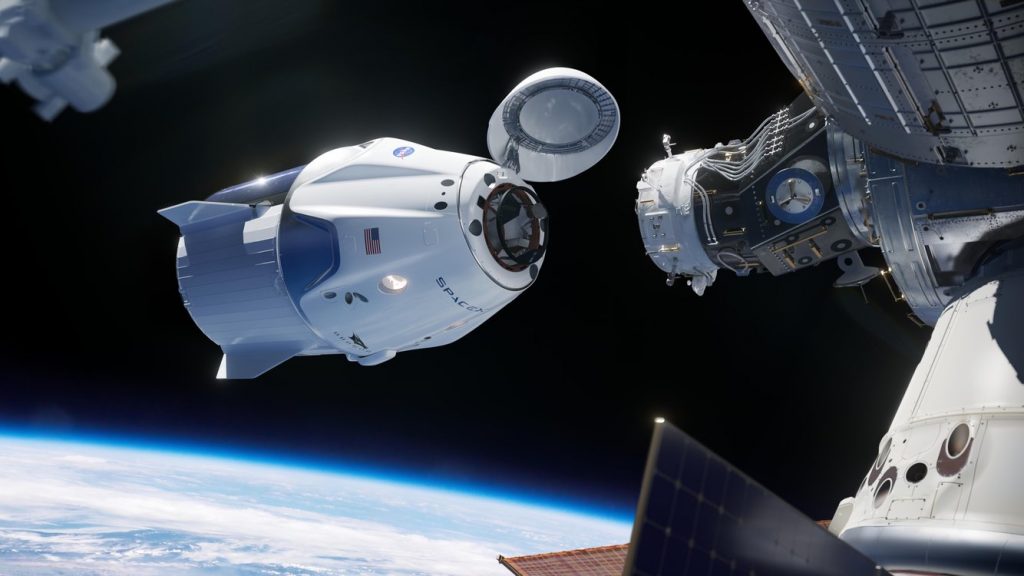
SpaceX has become the first company to design, build, launch, and now dock a commercial spaceship made to fly people to the International Space Station.
Elon Musk’s rocket company launched the seven-seat vehicle, called Crew Dragon, on Saturday at 2:49 a.m. ET. By early Sunday, the 14,000-pound space capsule had caught up to the football-field-size laboratory that orbits Earth.
After a series of safety checks, SpaceX began nudging Crew Dragon toward the front end of the space station. At 5:51 a.m. ET, it made soft contact with a docking node, engaged six arms, and latched on. About 11 minutes later, the spaceship tightly screwed itself to Node 2 of the space station.
Nobody was on board to open Crew Dragon’s hatch — only 400 pounds of cargo and a crash-test dummy named Ripley. However, NASA said SpaceX’s demonstration, or Demo-1 mission, is “a critical first step” in restoring US-crewed access to space, since the goal is to prove the new spaceship is safe to fly its astronauts.
“A new generation of space flight starts now with the arrival of @SpaceX’s Crew Dragon to the @Space_Station,” Jim Bridenstine, the NASA administrator, tweeted on Sunday. “Congratulations to all for this historic achievement getting us closer to flying American Astronauts on American rockets.”
NASA’s space shuttle Atlantis was the last American human-rated ship to touch the space station, and that was in July 2011. (NASA retired the space shuttle program after that flight.)
On Sunday, Crew Dragon docked with Node 2, where NASA’s 100-ton space shuttle orbiters often used to dock.
The symbolism was not lost on the space station’s three-person Expedition 58 crew, who opened the hatch, floated inside Crew Dragon at 8:07 a.m., and held a greeting ceremony for Crew Dragon live on NASA TV.
“It was a beautiful thing to see,” said David Saint-Jacques, a Canadian astronaut and station crew member. “Today we welcome a brand-new spacecraft to the space station and a great new addition to the quiver of tools we have for humans to further space exploration. This is a good day, a first day of a new era for the next generation of space explorers.”
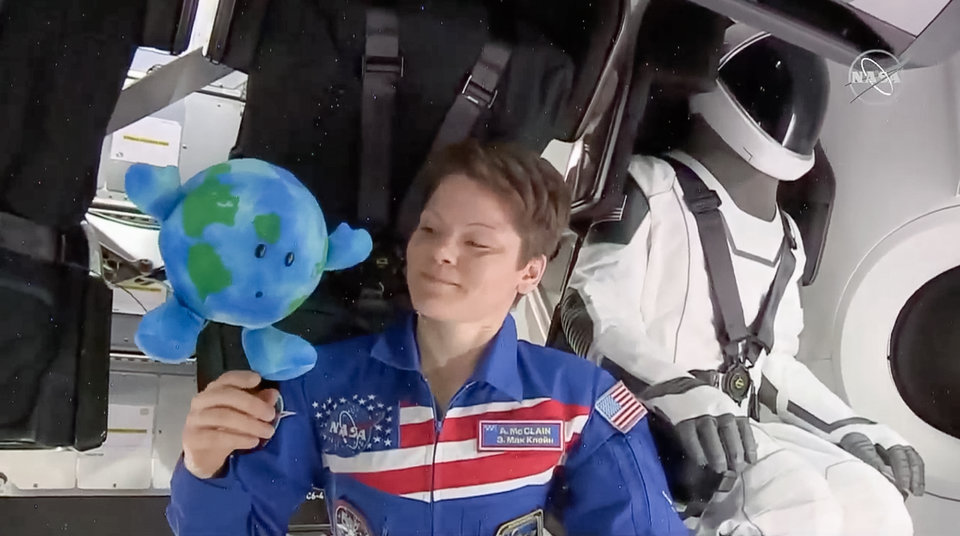
During the brief greeting ceremony, Oleg Kononenko, a Russian crew member and the Expedition 58 commander, spoke first.
“On behalf of my crew, I would like to congratulate the United States of America and the NASA team for this very significant event: the launch and docking of the SpaceX Crew Dragon spaceship,” Kononenko said. “It’s a historic step … on our way of human beings [moving] beyond low-Earth orbit to the moon, and Mars, and the future.”
Saint-Jacques spoke next, marveling at the thousands of people, years of work, and close collaboration between SpaceX and NASA that it took to pull off the docking of a commercial spaceship.
Last was Anne McClain, a NASA astronaut who’s part of the space station’s crew. She had the most to say about Crew Dragon’s successful arrival at her orbiting home in the sky.
“Our sincere congrats to all earthlings who have enabled the opening of this next chapter in space exploration,” McClain said. “And congratulations to all nations, private space firms, and individuals who wake up every day driven by the magic of exploration. This day belongs to all of us.”
She remarked on the international makeup of the space station and the effort that went into its creation 250 miles above Earth, adding that Crew Dragon is now part of it.
“Spaceflight gives us a chance to reflect on the context of our existence. We are reminded that we are human before any of our differences, before all of the lines are drawn that divide us,” she said. “We are reminded that we’re at our best when we are a part of something bigger than ourselves.”
She continued: “These events remind us that we are more alike than different, that we can be united by a cause that is not based on fear, threat, or a common enemy, but rather on a bold endeavor — an insatiable curiosity to go beyond what is known and to do what has never been done. We humans were built for exploration, and we were built to do it together.”
McClain and her colleagues then floated into the Crew Dragon to show it off to the world.
Inside the spaceship, McClain grabbed onto a plush Earth toy that SpaceX had strapped into a seat before launch. The toy, which Musk has called a “super high tech zero-g indicator,” has been floating around the cabin on the end of a string since Crew Dragon entered orbit.
“On behalf of Ripley, little Earth, myself, and our crew, welcome to the Crew Dragon,” she said. “These amazing feats show us not how easy our mission is, but how capable we are of doing hard things. Welcome to the new era in spaceflight.”
She then spun the Earth toy with a gentle nudge.
Crew Dragon’s mission is not over with docking and opening the hatch. It has to pull off a series of other feats, including a textbook landing, before NASA will allow astronauts on board.
Launch and docking are what Musk described on Saturday as “some of the riskiest items” in the Demo-1 mission. But undocking, deorbit, and a splashdown — landing in the water — are up next.
The space station crew is supposed to close the Crew Dragon’s hatch sometime on Thursday, and the ship is scheduled to depart at 2 a.m. ET.
Crew Dragon is then scheduled to land in the Atlantic Ocean near Kennedy Space Center on Friday around 7:30 a.m. ET. (You can watch live coverage of each major milestone here.)
If SpaceX can pull off Demo-1 with flying colors, the mission could be a major turning point for the company.
“The whole goal of SpaceX was crewed spaceflight and improving space exploration technologies — that’s actually the full name of the company: Space Exploration Technologies,” Musk said during a press briefing on Saturday after launch.
“It’s been 17 years — we still haven’t launched anyone yet — but hopefully we will later this year,” he added. “That would definitely be the culmination of a long dream for me and a lot of other people at SpaceX.”
Data gathered by Demo-1 will be used to tweak and finalize a new Crew Dragon to fly astronauts on an experimental mission called Demo-2.
SpaceX and NASA may rocket that first crewed mission toward the space station as soon as July, and the veteran astronauts Bob Behnken and Doug Hurley will be on board.
“It’s an incredibly sleek-looking vehicle,” Hurley said during an impromptu press briefing on Friday at Kennedy Space Center, adding that it’s “a lot more intuitive” than the space shuttle. He said that instead of about 2,000 knobs, buttons, dials, switches, and other controls like a shuttle orbiter, Crew Dragon had about 30.
“We’ve been following the process for a few years at this point,” Behnken said after launch on Sunday. “So seeing a success like this definitely gives us a lot of confidence in the future.”
May 03, 2019.
How This Entrepreneur Just Sold For $1.9 Billion The Company That He Created Out Of His Own Garage
Alejandro Cremades Former Contributor
Entrepreneurs | Author of The Art of Startup Fundraising & Serial Entrepreneur
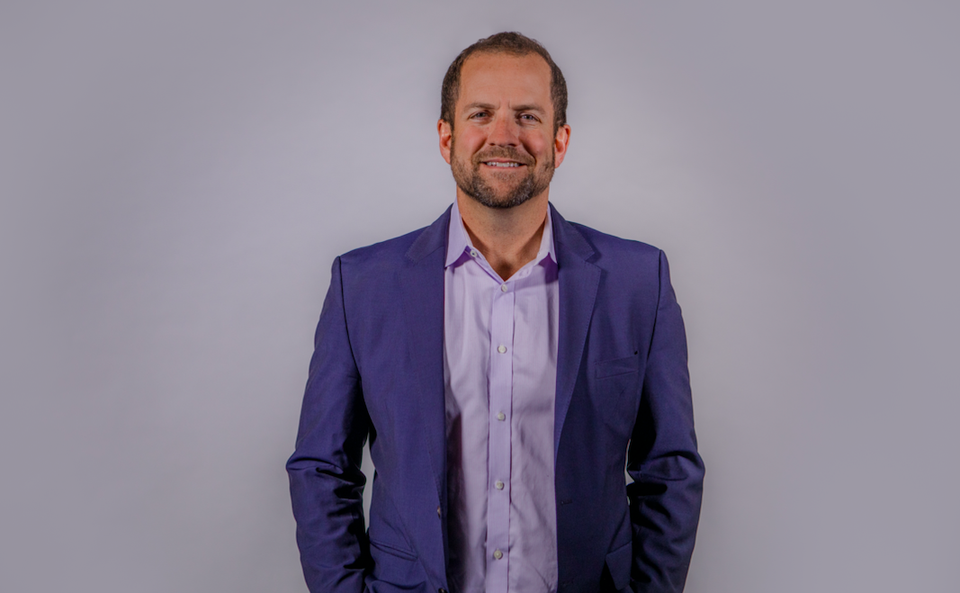
It was really exciting interviewing Rick Stollmeyer in a recent episode of the DealMakers Podcast. He has been through every single part of the lifecycle of building, financing, scaling, and then also exiting a business.
He’s gone from becoming a mechanical engineer with the Navy to being an officer on a nuclear submarine, and then to leading a yoga software company that just got acquired for almost $2 billion (listen to the full episode here).
From Selling Ball Caps to Billions in Saas
A nuclear submarine is one of the most complicated things ever built by humankind. Certainly, on par with a spacecraft. They can cost over $1 billion, and a lot more to operate too. It’s run on tight systems, complex systems, and everyone has an important job. Being on one on active duty will teach you principles of leadership in a very high-consequence environment.
Rick Stollmeyer actually ended up running a ship’s store that funded morale and the crew’s recreation fund. It was a business. As they would come into ports, they would allow tourists to come onboard the ship and tour it. They would sell them t-shirts, ball caps, and belt buckles.
Rick quadrupled the size of that business. Then he says he realized, “Maybe my best gifts aren’t in being a military officer. Maybe my best gifts lead back to business.” He was raised in a small business family, and found real joy in that.
May 03, 2019.
Adobe and Microsoft Team Up to Challenge Salesforce
Leo Sun
April 3, 2019 | Technology and Telecom

Adobe (NASDAQ:ADBE) and Microsoft (NASDAQ:MSFT) are teaming up, integrating their sales and marketing software to challenge Salesforce (NYSE:CRM). The two companies will share their data and user account profiles in Adobe’s Experience Cloud, which includes cloud-based sales and marketing tools, and Microsoft’s Dynamics CRM (customer relationship management) platform, which lets companies’ sales teams maintain customer relationships on a cloud platform.
These platforms will also be integrated with Microsoft’s LinkedIn, which will enable companies on the platform to engage in more sales and marketing transactions with other businesses. Adobe can also use data from LinkedIn users to shape its marketing campaigns. Let’s see how this partnership benefits both tech giants, and whether Salesforce should be concerned.
Adobe generates revenue from two core businesses: its digital media division, which houses its flagship Creative Cloud services like Photoshop, and its digital experience division, which provides cloud-based marketing and analytics tools to customers.
The growth of Adobe’s digital experience business reduces its dependence on its Creative Cloud services and tethers more enterprise customers to its ecosystem. To boost the experience unit’s growth, Adobe acquired e-commerce services provider Magento and marketing automation firm Marketo last year.
Last quarter, Adobe’s digital experience revenue rose 34% annually to $743 million, or 29% of its top line. That significantly outpaced its 22% growth in digital media revenue. During the company’s March 14 conference call with analysts, CEO Shantanu Narayen attributed that growth to the “mandate for enterprises and organizations to digitally transform their businesses” and their their need to deliver “world-class end-to-end customer experiences.”
Adobe didn’t disclose how much revenue Magento and Marketo generated, but Narayen said both services “were off to a strong start” and that it was “successfully integrating” them into its Experience Cloud. Therefore, pooling that platform’s data with Microsoft — which enjoys a strong presence in the enterprise market with Windows, Office, and Azure — could significantly boost its growth.
Microsoft’s top priority in recent years has been the growth of its commercial cloud business, which mainly consists of Office 365, Dynamics 365, and Azure. Last quarter its commercial cloud revenue rose 48% annually to $9 billion, or 28% of its top line.
Microsoft doesn’t disclose each cloud service’s exact revenue, but it regularly reports their year-over-year growth rates. Dynamics 365, its suite of cloud-based CRM (customer relationship management) and marketing tools, grew its revenue 51% annually last quarter. That made it Microsoft’s second-fastest growing product category after its cloud platform, Azure, which generated 76% growth. Office 365 Commercial revenues rose 33% during the quarter.
During the company’s Jan. 30 conference call, CEO Satya Nadella attributed Dynamics’ growth to a “differentiated approach” that made CRM and marketing solutions “more modular, extensible, and AI-driven.” In other words, Microsoft provides flexible and customizable solutions that can be integrated with a wide range of other services — including its Azure IoT (Internet of Things), AI, and Mixed Reality (virtual and augmented reality) platforms. Integrating Adobe’s Experience Cloud into that ecosystem complements that strategy.
LinkedIn, which Microsoft acquired in 2016, grew its average visits 30% year-over-year last quarter on higher engagement rates and job postings among its 610 million members. Its revenue rose 29% annually. Microsoft is gradually tethering LinkedIn to Office 365 and Dynamics 365, and seamless connections with Adobe’s Experience Cloud could help enterprise users manage hiring, marketing, and customer relationships from a single pool of contacts.
Salesforce revolutionized the CRM market with its namesake cloud-based CRM platform. Salesforce controls 20% of the global CRM market, according to IDC. Oracle and SAPeach control about 7% of the market, while Microsoft and Adobe hold a combined share of 7%.
Therefore, a partnership between Microsoft and Adobe, while significant for both companies, probably isn’t setting off alarms at Salesforce yet. Instead, Salesforce can leverage its leading position in the CRM market to keep expanding its ecosystem with newer services like cloud-based marketing tools.
Salesforce’s Marketing and Commerce Cloud, which houses its marketing and CRM services, grew its revenue 34% annually to $535 million (16% of its top line) last quarter. The stickiness of Salesforce’s ecosystem, which locks in customers with its CRM services, could hold challengers like Adobe and Microsoft at bay for now.
However, Salesforce shouldn’t underestimate Microsoft and Adobe’s ability to catch up. Both tech giants have loyal user bases, and the combination of their ecosystems could pose a long-term threat to Salesforce.
May 03, 2019.
Eduardo Saverin’s VC Firm B Capital Raises $406 Million In First Close Of New Fund, Filing Shows
Alex Konrad
Forbes Staff. Covering venture capital, software and startups

The venture capital firm cofounded by Facebook billionaire Eduardo Saverin and partner Raj Ganguly has raised hundreds of millions in new funding to invest in startups.
B Capital has raised $406 million in a first close of its second fund, according to a new regulatory filing with the SEC obtained on Friday. The firm, which wrote in the filing it had raised that amount from 62 investors since late March, indicated that it planned to raise more than that amount, which already tops the $360 million it raised for its first fund.
B Capital declined to comment on the filing or its funding plans.
Earlier in March, Forbes published a wide-ranging interview with Saverin, the cofounder of Facebook who moved to Singapore in 2009. In that article, Saverin and Ganguly revealed a strategy to invest in companies with an international focus—B Capital maintains offices in California, New York and Saverin’s Singapore—and ones that can benefit from a “special relationship” with Boston Consulting Group, the consulting firm that is one of the anchor investors in B Capital’s initial fund.
At the time, B Capital had made about 20 investments from that fund, using up much of its “dry powder,” as the industry sometimes refers to money available to invest in startups. A source told Forbes at the time that B Capital would look to raise a second fund of approximately twice the size of its first later in 2019. That remains the goal after this first filing, the source says now.
At the time, B Capital had recently expanded to bring on a seventh partner, Karen Appleton Page, a former executive at Box and Apple. With seven investment partners and check sizes that can run into the tens of millions, it’s not surprising that B Capital, still just four years old, would seek out so much money so fast.
“No matter how lucky or blessed I might be, I will never retire on a beach,” Saverin told Forbesin early 2019. “We are still so early into making the technologies that will impact the world.”
To read more of Saverin’s views—and see how B Capital is looking to stand out in a crowded venture capital market—check the full feature story here.
May 03, 2019.
Investment in US space industry reaches record levels in 2018
Joe Williams
Published April 09, 2019. |. SpaceX | FOXBusiness
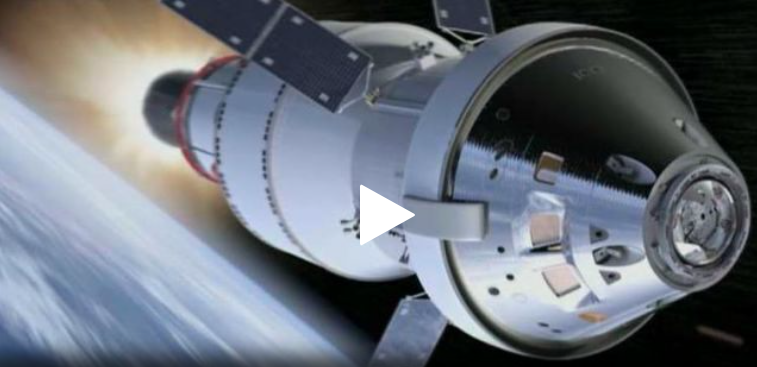
Investors poured a record $3.2 billion into the U.S. space industry in 2018, according to a new study released on Tuesday, spanning both early- and late-stage startups and underscored by increasing interest from venture capitalists.
Overall, nearly $22 billion in outside investment flowed into the sector in the past 18 years, Bryce Space and Technology wrote in its yearly analysis. In 2018, a $750 million investment in Blue Origin from owner and Amazon founder Jeff Bezos and multiple funding rounds at Elon Musk-owned SpaceX helped drive a 26 percent increase over 2017.
While interest balloons — including from major U.S. companies like Boeing, Goldman Sachs and Morgan Stanley, who all funded space startups in 2018 — perils remain as early-stage companies grapple with developing a sustainable, commercial business model.
“Some maturing ventures are now generating revenue, but many startup space companies have not yet definitively demonstrated business case success. The overall viability of the start-up space ecosystem will be a critical topic in the next several years,” Bryce wrote in its report.
May 03, 2019.
He’s Worth About $700 Million. And He Says It’s ‘Ridiculous’
By Yoojung Lee and Min Jeong Lee
April 2, 2019, 10:00 AM MDT | Updated on April 3, 2019, 4:51 AM MDT

When he graduated from university in Japan, Tomohiro Ohno didn’t know what he wanted to do. But he knew what he didn’t want to do, which was work for a traditional Japanese company.
So he ended up founding a firm that’s more space age than staid: Ohno was an early mover into augmented reality. The company he started, Kudan Inc., is developing programs that enable computers to have the equivalent of human eyes, using what Ohno and his industry call computer vision algorithms.
Kudan listed on the Tokyo Stock Exchange in December. It was a sparkling debut. The stock shot up more than sixfold to a high at the end of February, which saw his fortune top $800 million. While it has since given up some of those gains, the market value is still about $1.3 billion, and Ohno owns more than half the shares. He’s currently estimated to have a net worth of about $700 million, according to the Bloomberg Billionaires Index. Still, the 49-year-old entrepreneur is far from getting carried away.
“It’s a ridiculous amount,” Ohno, who goes by “Tomo,” said in an interview in Tokyo. “That doesn’t mean anything. We’re not aiming to increase market value,” he said. “It doesn’t really impact us.”
While people often associate augmented reality with Pokemon Go, the hit mobile game that makes images of anime characters seem as if they’re in users’ real-world locations, Ohno says the technology is so much more than that. “I’ve nothing against Pokemon Go,” he said. “But after all, it’s just showing Pikachu” — one of the characters — “in the corner of the room.”
Kudan is deploying the technology for different purposes. It’s developing programs that enable computers to perceive real-world objects in three dimensions. They have uses in everything from driverless cars to drones and even vacuum cleaners. It works with other technologies such as artificial intelligence to enhance the autonomous and interactive experience.
“AI is the brain and we are the eyes,” said Ohno, who started his career as a management consultant before working at a startup in Bristol, U.K. and then founding his own business buying and selling computer-game licences. “The eyes and brain need to work together.”
Kudan recently announced a partnership with California-based Synopsys Inc. to have its technology embedded into Synopsys products, which cover markets from mobile to automotive. While Ohno says making his company massive isn’t his main goal, this kind of alliance helps Kudan gain exposure.
“We don’t want to be the next Google,” Ohno said. He wants Kudan to be more like ARM Holdings, the chip designer owned by SoftBank Group Corp. whose technology is in most smartphones. “ARM is massive, but tiny compared to Intel. But it’s everywhere. That’s where we want to go.”
Kudan initially focused on using augmented reality for marketing, according to Ohno. No one was successful in making the technology easily digestible to ordinary people at the time, giving the company a good business opportunity, he said. But soon, a bigger firm doing similar things emerged as a competitor. That caused Kudan to come up with a strategy of making competitors its customers, instead of defending its turf.
The process involved switching the company’s business model from using AR for marketing to developing apps using the technology and finally becoming a provider of algorithms to other companies. Kudan’s chief technology officer, John Williams, who Ohno calls a “self-taught genius” and his best friend, convinced him to move away from apps into the underlying technologies, Ohno said. Now, Kudan has a wider customer base, including previous competitors, he said.
“It’s a highly rated stock among investors,” said Tomoichiro Kubota, an analyst at Matsui Securities Co. in Tokyo. But there is “the risk of seeing a company with a similar model popping up,” he said. And “the other side of expectations being high is that we’re in a situation where there’s been quite a bit of buying, and it’s looking expensive.”
Kudan trades at more than 150 times book value, and more than 35,000 times earnings, which were negligible for the fiscal year ended March 31, 2018. The stock fell 1.2 percent on Wednesday in Tokyo, paring this year’s gain to 93 percent.
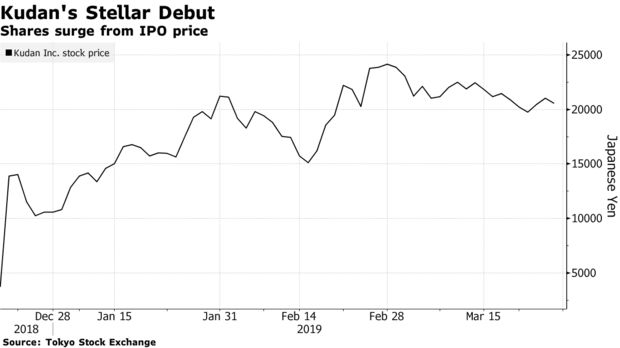
That won’t unduly concern Ohno, who is more focused on developing the business and other goals, such as setting up a unit in China and taking it public. He’s still based in Bristol, where his company’s technology lab is located. Kudan has fewer than 20 employees, many of whom have Ph.D. degrees from a computer vision laboratory at the University of Bristol. Ohno said the company hires only experts in their field, and shuns meetings as unnecessary, because his people already know what to do.
The office in Bristol is situated in a former church. Ohno’s seat has a five-meter stained-glass window directly behind him, which shines a glow of light over him on sunny days. Asked if he has plans to move to a new location, he said he’s happy where he is.
“I do look like a god there,” he said.
(Updates with details on stock performance in 13th paragraph. A previous version was corrected to remove a photograph.)
May 03, 2019.
Amazon’s big internet plan: 3,236 satellites to beam faster, cheaper web to millions
Liam Tung
April 5, 2019
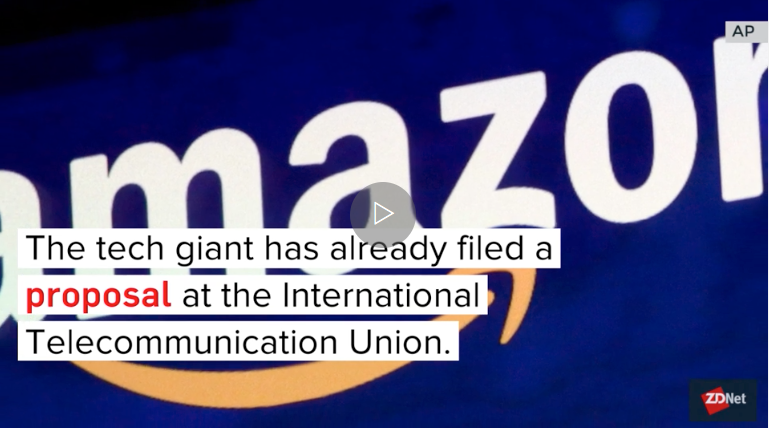
Amazon has plans to establish a constellation of 3,236 satellites in low Earth orbit to patch up areas with poor or no internet connectivity.
Amazon’s planned push into satellite-delivered broadband is taking shape under Project Kuiper, details of which appear in three documents filed with the International Telecommunication Union (ITU) last month. The documents were filed by Kuiper Systems LLC.
First spotted by Geekwire, the documents reveal Amazon plans to put 3,236 satellites at three different altitudes. There would be 784 satellites orbiting at an altitude of 367 miles (590km); 1,296 satellites at 379 miles (610km); and 1,156 satellites at 391 miles (630km).
An Amazon spokesperson confirmed the existence of Amazon’s satellite broadband ambitions, noting that it was a “long-term project that envisions serving tens of millions of people who lack basic access to broadband internet”.
The company is also planning to partner with other companies to bring the project to reality.
That could make companies in the space-broadband race, like SpaceX and OneWeb, potential rivals or partners. The FCC in November authorized SpaceX to deploy and operate 7,000 satellites in very low Earth orbit to deliver broadband.
OneWeb, which has $2bn in backing from the likes of Airbus, Coca Cola, Softbank, and Virgin, in February launched six satellites with the same ambition. Amazon CEO Jeff Bezos’ Blue Origin space venture already has a contract to launch satellites for OneWeb and TeleSat.
Meanwhile, Facebook, Boeing and LeoSat have revealed plans to beam internet from space. Alongside SpaceX’s FCC authorization, the regulator also authorized spectrum in the US for both TeleSat’s and LeoSat’s space broadband systems.
Should Amazon’s plans come to fruition, its satellites would provide about 95 percent of the world’s population with coverage between latitudes 56 degrees north to 56 degrees south. The two parallels circle the Earth at about the latitude of Sweden and below Australia.
Amazon will still need to get approval from the FCC and other regulators around the world to move forward with Project Kuiper.
Satellite internet today is typically very expensive. However, there is hope that satellites in low Earth orbit will be cheaper and offer lower latency.
Amazon said it would “of course look at all options” when asked whether Bezos’ Blue Origin would have an edge over others for launching the Kuiper constellation.
May 03, 2019.
Why Are Hollywood Stars Obsessed With Vanderhall?
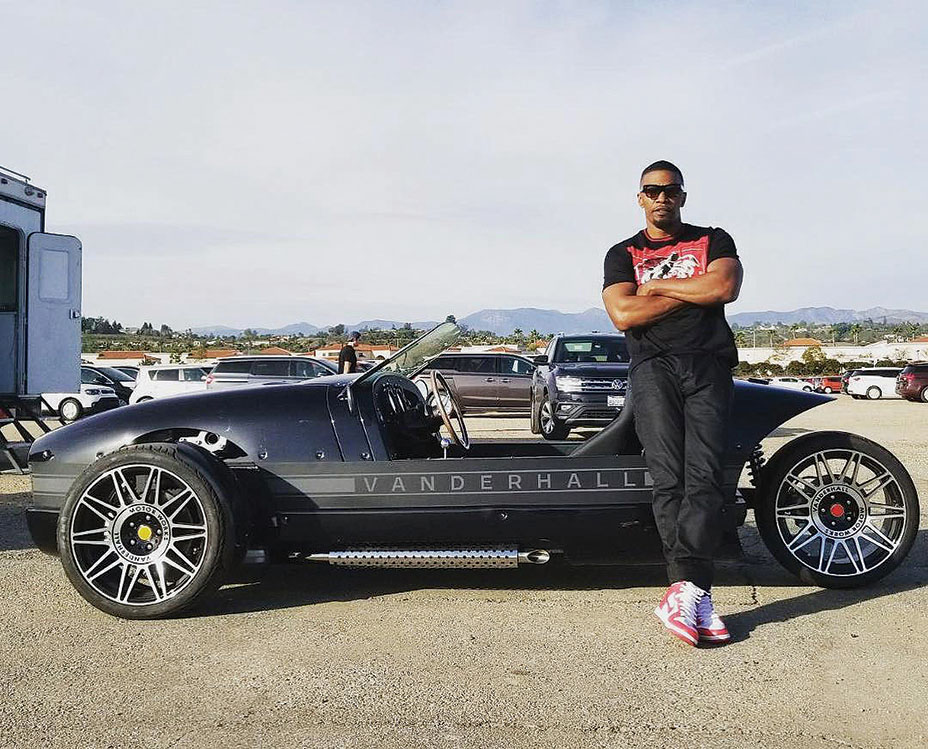
READ FULL ARTICLE ON HOLLYWOOD REPORTER
In its never-ending quest to be a cut above the crowd, even on the road, Hollywood has taken its automobile obsession to a new level. That includes alternative, highly modified vehicles. Vanderhall Motor Works, based in Provo, Utah, creates four models of its three-wheeled autocycle. “In a word, Vanderhalls are fly,” Jamie Foxx says of the alt-vehicle with a price tag that starts at $29,950 and is permissible on freeways. “I have become a car guy in the past few years, and the Vanderhall is something different.” So obsessed is Foxx with his Venice in Raven Black Metallic, he invited Vanderhall director of marketing Daniel Boyer as his Oscar night plus-one this year to Byron Allen’s viewing party, where they sat with Quincy Jones…
Alexandra Cheney
May 03, 2019.
Bacon, a Hall Venture Partners Portfolio Company, Closes $3 Million Investment Round

Provo-based Bacon, an app that allows employers to select and hire qualified workers in just a few moments and allows job seekers to pick up shifts anytime they please, announced Thursday it has closed its initial investment round of $3 million.
Since launching in 2018, more than 10,000 people have used the app to find temp jobs at hundreds of businesses, including warehouses, manufacturing, retail, restaurants, catering and more. Bacon is part of the first tax-advantaged venture fund, the Hall Opportunity Fund 1, offered by the management team at Hall Venture Partners in Provo.
“The initial funding is helping us accelerate our growth in Utah and Texas and will eventually allow us to expand nationwide,” said Hunter Sebresos, Bacon CEO. “This is a tremendous opportunity for meeting the huge needs in the thriving gig economy.”
Former Pluralsight COO/CFO Greg Woodward and his wife Mary led the first investment round into Bacon with their own investment group, and according to a press release, the husband-wife team has made significant investments into other startups included in the Hall Opportunity Fund 1.
“The Bacon app is transforming temporary labor the same way other apps have changed how we order rides and rooms on our phones allowing individuals to capitalize on their skills and earning capacity by easily identifying and connecting them with earning opportunities all with a simple to use app,” Woodward said. “All of the companies with Hall Opportunity Fund 1 are enticing because of HVP’s ability to innovate and commercialize ideas that bring strong returns.”
Woodward now serves on the board for Bacon, and Sebresos said his experience in scaling companies will be invaluable.
“We are excited to be aligned with him and to benefit from his wisdom and experience,” Sebresos said.
The Hall Opportunity Fund 1 is a $100 million fund allowing investors to participate in companies being developed at Hall Labs in Provo. Hall Labs has already produced more than $650 million in companies sold so far.
“For more than six decades, we have been bringing new technology to fruition,” said David Hall, HVP and Hall Labs founder. “Hall Labs has everything in one place, from funding, research and development to sales and marketing.”
May 03, 2019.
Will Walker Speaking at the “AnySizeDeals” Conference with Tim Draper and Others

WHEN: September 7-9, 2021
WHERE: The Venetian Resort, Las Vegas
CONFERENCE DETAILS: https://anysizedealsweek.com/conferences/
AnySizeDeals Week is the premier thought leadership and dealmaking event in the real estate industry. It’s three days of dynamic conversations, networking, dealmaking, and showcases for the most influential leaders in the real estate and PropTech space. The event caters to senior executives at large real estate firms, big tech companies, and startups.
May 03, 2019.